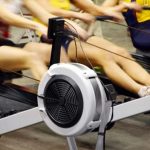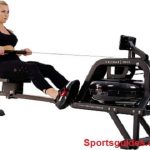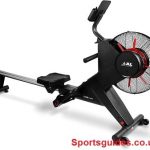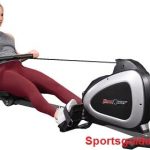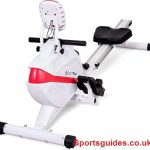As an Amazon Associate, I earn from qualifying purchases.

Are you looking to track your progress during rowing workouts? If so, then learning how to calculate distance on a rowing machine is crucial. While it may seem daunting at first, with a little guidance, anyone can easily calculate the distance they cover while using a rowing machine.
In this article, we will guide you through the process of calculating distance on a rowing machine, step by step. We will cover everything from understanding the basics of rowing machine distance calculation, to the different metrics used to measure distance. By the end of this article, you’ll be able to track your progress and set goals for future workouts like a pro.
Understanding the Basics of Rowing Machine Distance Calculation
Before diving into the details of how to calculate distance on a rowing machine, it is important to understand the basics of how a rowing machine works. A rowing machine uses a flywheel to create resistance against which the user pulls, simulating the motion of rowing a boat.
The distance traveled on a rowing machine is measured in meters or kilometers, and it is calculated based on the number of times the flywheel rotates. This calculation is done using an algorithm that takes into account the resistance level, stroke rate, and duration of the workout.
The Metrics Used to Measure Distance
There are two primary metrics used to measure distance on a rowing machine: meters and kilometers. The majority of rowing machines are designed to measure distance in meters, but some machines allow users to switch to kilometers if desired.
Another important metric used to track progress on a rowing machine is the split time. Split time is the amount of time it takes to row 500 meters, and it is used to monitor speed and progress over time. A faster split time indicates that the user is rowing more efficiently and covering more distance in less time.
Step-by-Step Guide To Calculating Distance On A Rowing Machine
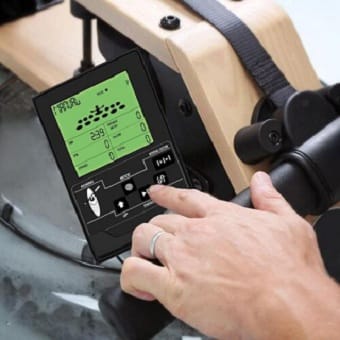
To calculate distance on a rowing machine, follow these steps:
Step 1: Set the Resistance Level
Before starting the workout, adjust the resistance level to the desired level. This will impact the number of meters you cover with each stroke.
Step 2: Begin Rowing
Start rowing, paying attention to your form and stroke rate. The flywheel will begin to rotate as you pull on the handle.
Step 3: Monitor the Display
Most rowing machines have a display that shows relevant workout information, including distance, split time, and stroke rate. Monitor the display throughout the workout to track progress and adjust as needed.
Step 4: Stop the Workout
When finished, stop the workout and check the display for the total distance covered.
Step 5: Record Your Progress
Record the total distance covered and any other relevant metrics, such as split time and stroke rate. This will help you track progress over time and set goals for future workouts.
Tips for Maximizing Your Rowing Machine Workout
To get the most out of your rowing machine workout, follow these tips:
- Focus on proper form to avoid injury and maximize efficiency
- Vary the resistance level and stroke rate to keep workouts challenging and interesting
- Set specific goals for each workout, such as covering a certain distance or improving split time
- Incorporate other exercises, such as strength training or stretching, to create a well-rounded fitness routine
FAQs

Is there a standard distance measurement used for rowing machine workouts?
Yes, the majority of rowing machines measure distance in meters. However, some machines allow users to switch to kilometers if desired.
What is split time and why is it important?
Split time is the amount of time it takes to row 500 meters, and it is used to monitor speed and progress over time. A faster split time indicates that the user is rowing more efficiently and covering more distance in less time.
How often should I use a rowing machine?
This depends on your fitness goals and overall exercise routine. Generally, it is recommended to use a rowing machine at least 2-3 times per week for optimal cardiovascular and muscular benefits.
Can rowing machines help with weight loss?
Yes, rowing machines can be an effective tool for weight loss when used in combination with a healthy diet and other forms of exercise. Rowing burns calories and can help to build muscle, both of which contribute to weight loss.
Are there any common mistakes to avoid when using a rowing machine?
Yes, some common mistakes include using incorrect form, setting the resistance level too high or too low, and neglecting to warm up properly. Be sure to research proper rowing technique and adjust the machine settings to match your fitness level and goals.
Conclusion
Calculating distance on a rowing machine is a simple process once you understand the basics. By tracking your progress over time, you can set goals and challenge yourself to improve your fitness level. Follow the steps outlined in this article and utilize the tips provided to get the most out of your rowing machine workouts.
